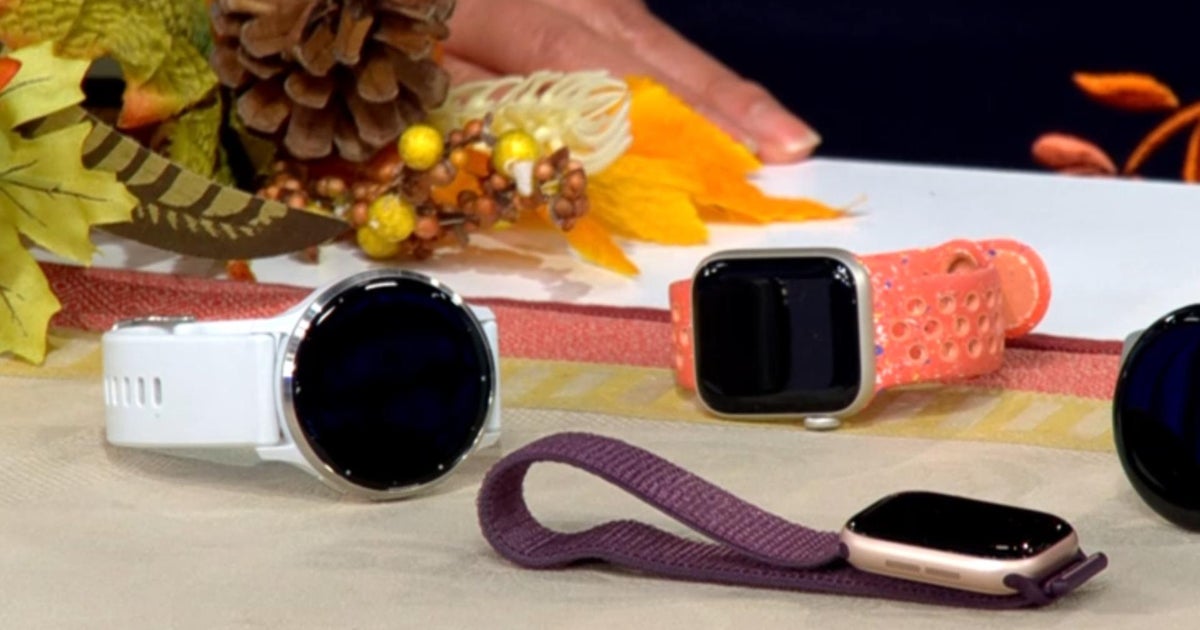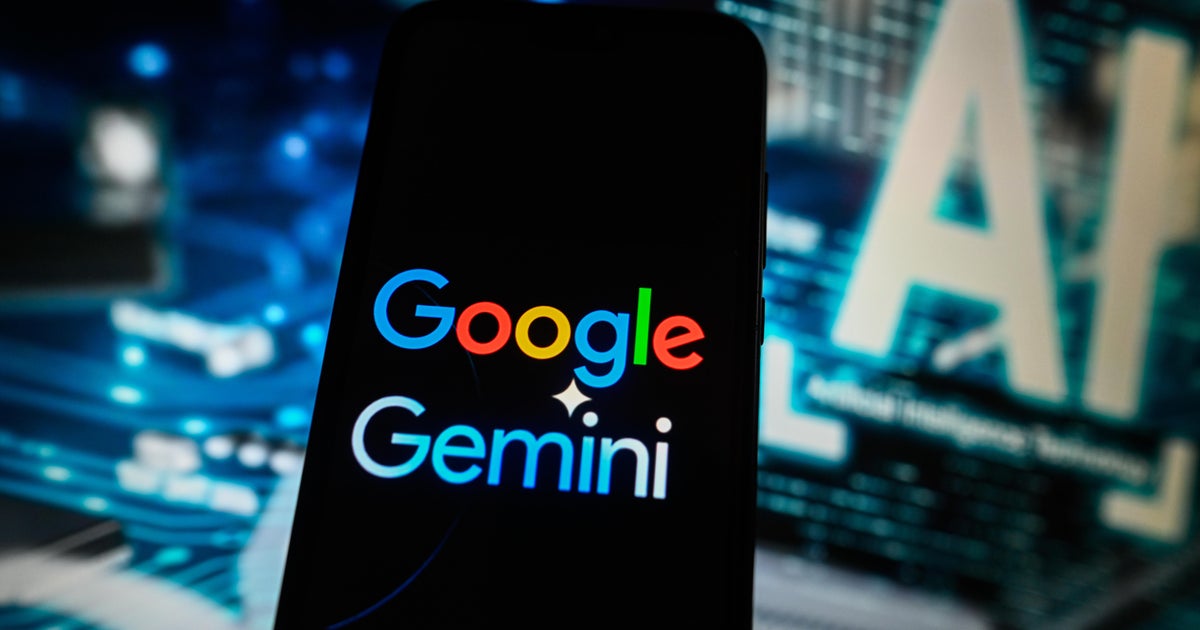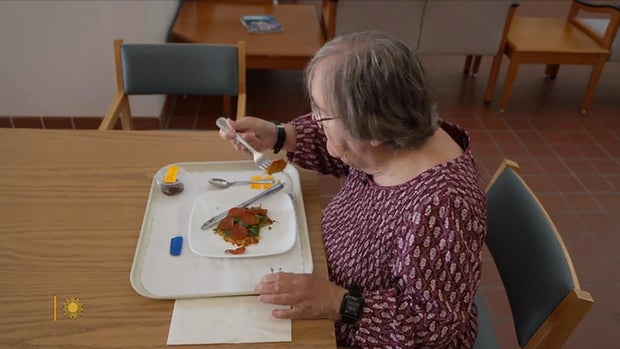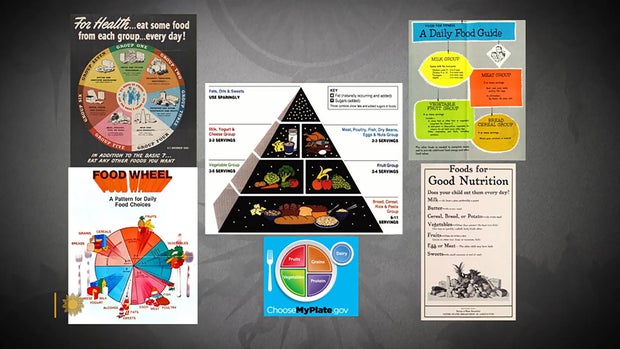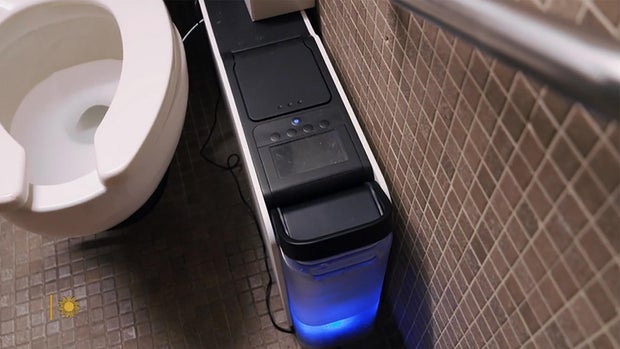CBS News
Pre-order the Google Pixel 9 Pro Fold and score a $350 gift card

The folding smartphone category is about to get a bigger with the Google Pixel 9 Pro Fold, which is available for pre-order now. With a starting price of $1,799, this powerful phone features a 6.3-inch cover display and fits nicely in a pocket when folded. When it’s open, you get access to a stunning 8-inch touchscreen. The phone begins shipping September 4 and is definitely a worthy competitor to the Samsung Galaxy Z Fold 6.
Also starting today, pre-orders are open for the new Google Pixel 9, Pixel 9 Pro and Pixel 9 Pro XL smartphones, along with the Pixel Watch 3 smartwatch, and the Pixel Buds Pro 2 wireless earbuds. Keep reading to discover how you can snag a great pre-order deal on Google’s newest and most powerful folding smartphone.
Google Pixel 9 Pro Fold: Everything you love about the Pixel 9 Pro, with a larger display
Display size: 6.3 inches (cover), 8 inches (internal) | Display type: Actua touchscreen OLED (cover), Super Actua Flex OLED touchscreen (internal) | Display resolution: 1,080 x 2,224 pixels (cover), 2,076 x 2,152 (internal) | Display brightness: Up to 2,700 nits (cover), 2,700 nits (internal) | Processor: Google Tensor G4, Titan M2 security co-processor | Available colors: Porcelain, obsidian | Dimensions: 6.1 x 3 x 0.5 inches (folded), 6.1 x 5.9 x 0.2 inches (unfolded) | Weight: 9.1 ounces | Battery life: Up to 24 hours | Storage options: 256GB, 512GB | Rear cameras: 48MP (wide), 10.5MP (ultra-wide), 10.8MP (telephoto) | Front camera: 10MP | Operating system: Android 14 | Port: USB Type-C 3.2 | Wireless connectivity: Wi-Fi 7, Bluetooth 5.3
Going head-to-head with the new Samsung Galaxy Z Fold 6, the Google Pixel 9 Pro Fold starts off almost exactly the same size as the Google Pixel 9 Pro when it’s folded. This means it fits comfortably in your pocket and you can use it just like a traditional smartphone. Just keep the phone closed and use just the 6.3-inch Actua OLED cover touchscreen.
When you unfold the Pixel 9 Pro Fold, you get access to a stunning 8-inch Super Actua Flex OLED touchscreen. You can display one app across the entire screen; run two apps side-by-side; or even take advantage of the phone’s new multi-view feature. This is the phone you want if you need extra on-screen real estate and the ability to multitask with ease — without having to carry a separate tablet.
The Pixel 9 Pro Fold is a must-have smartphone for Android power users, and it offers a slew of features the other Pixel 9 phones don’t offer, particularly when it comes to watching videos, shooting and editing photos or video, and multitasking. The phone comes in your choice of porcelain or obsidian colors. And you can choose between 256 gigs ($1,799) or 512 gigs ($1,919) of storage.
Head over to Best Buy to pre-order the Google Pixel 9 Pro Fold, starting at $1,799 and get a free $350 Best Buy gift card and three months of Google One service as a bonus. Best Buy is also offering up $460 instant credit for eligible devices.
New features in Google Pixel 9 phones
Android smartphones have entered the Gemini AI era. So all new Android phones will integrate the latest Google Gemini AI tools and features, including the Gemini Assistant, which has replaced Google Assistant. While older Android phones will gain some AI capabilities with an Android OS update, only the newer phones will offer all of the latest AI functionality.
All of the Google Pixel 9 smartphones have Gemini Assistant built in. So these phones understand not just the words you say or type, but the user’s intent. It can also share information between your Gmail inbox, your smartphone, your Google Drive account, as well as Calendar, Google Photos, Google Keep, Google Tasks and Google Maps. And if you subscribe to Gemini Advanced, you’ll get a new feature called Gemini Live, which lets you talk to Gemini Assistant through normal conversation.
Here are our 12 favorite features in the new of the Google Pixel 9 smartphones:
- Up to 20% longer battery life compared to previous Pixel phones.
- One year of Gemini Advanced service in most models.
- A satellite SOS feature that sends text messages via satellite in an emergency.
- A redesigned Pixel Weather app that is customizable and more accurate.
- More calling features through Pixel Call Assist, including Call Notes. You can record phone calls and receive both a full, text-based transcript and a call summary almost immediately after a call ends.
- Pixel Screenshots lets you to capture a screenshot of anything onscreen, store it for future reference and even make it searchable.
- Pixel Studio provides a more powerful text-to-image generator that includes a handful of style options.
- The redesigned Panoramic photo mode now supports night sight and the ability to capture up to 50-megapixel images.
- Group Photos makes capturing group images easier. There’s also the new Add Me feature, which can put you into a group if you’re the one taking the picture.
- Guided Frame uses AI to help you frame the best shots when shooting pictures or video.
- There are enhanced Magic Editor photo editing features, including a new Auto Frame tool.
- Video Boost enhances 4K resolution video up to near 8K resolution.
For more help choosing a new smartphone, we’ve got you covered with our comprehensive coverage of the best cell phones of 2024, the best smartphones with AI, the best folding smartphones in 2024, and the best smartphones under $500. In fact, all of our smartphone coverage is continuously being updated as new models and operating system updates are released.
CBS News
In praise of Seattle-style teriyaki

Watch CBS News
Be the first to know
Get browser notifications for breaking news, live events, and exclusive reporting.
CBS News
Gazan chefs cook up hope and humanity for online audience

Renad Atallah is an unlikely internet sensation: a 10-year-old chef, with a repertoire of simple recipes, cooking in war-torn Gaza. She has nearly a million followers on Instagram, who’ve witnessed her delight as she unpacks parcels of food aid.
CBS News
We interviewed Renad via satellite, though we were just 50 miles away, in Tel Aviv. [Israel doesn’t allow outside journalists into Gaza, except on brief trips with the country’s military.]
“There are a lot of dishes I’d like to cook, but the ingredients aren’t available in the market,” Renad told us. “Milk used to be easy to buy, but now it’s become very expensive.”
I asked, “How does it feel when so many people like your internet videos?”
“All the comments were positive,” she said. “When I’m feeling tired or sad and I want something to cheer me up, I read the comments.”
We sent a local camera crew to Renad’s home as she made Ful, a traditional Middle Eastern bean stew. Her older sister Noorhan says they never expected the videos to go viral. “Amazing food,” Noorhan said, who added that her sibling made her “very surprised!”
After more than a year of war, the Gaza Strip lies in ruins. Nearly everyone has been displaced from their homes. The United Nations says close to two million people are experiencing critical levels of hunger.
Hamada Shaqoura is another chef showing the outside world how Gazans are getting by, relying on food from aid packages, and cooking with a single gas burner in a tent.
Shaqoura also volunteers with the charity Watermelon Relief, which makes sweet treats for Gaza’s children.
In his videos online, Shaqoura always appears very serious. Asked why, he replied, “The situation does not call for smiling. What you see on screen will never show you how hard life is here.”
Before dawn one recent morning in Israel, we watched the UN’s World Food Program load nearly two dozen trucks with flour, headed across the border. The problem is not a lack of food; the problem is getting the food into the Gaza Strip, and into the hands of those who desperately need it.
The UN has repeatedly accused Israel of obstructing aid deliveries to Gaza. Israel’s government denies that, and claims that Hamas is hijacking aid.
“For all the actors that are on the ground, let the humanitarians do their work,” said Antoine Renard, the World Food Program’s director in the Palestinian territories.
I asked, “Some people might see these two chefs and think, well, they’re cooking, they have food.”
“They have food, but they don’t have the right food; they’re trying to accommodate with anything that they can find,” Renard said.
Even in our darkest hour, food can bring comfort. But for many in Gaza, there’s only the anxiety of not knowing where they’ll find their next meal.
For more info:
Story produced by Mikaela Bufano. Editor: Carol Ross.
See also:
“Sunday Morning” 2024 “Food Issue” recipe index
Delicious menu suggestions from top chefs, cookbook authors, food writers, restaurateurs, and the editors of Food & Wine magazine.
CBS News
A study to devise nutritional guidance just for you

It’s been said the best meals come from the heart, not from a recipe book. But at this USDA kitchen, there’s no pinch of this, dash of that, no dollops or smidgens of anything. Here, nutritionists in white coats painstakingly measure every single ingredient, down to the tenth of a gram.
Sheryn Stover is expected to eat every crumb of her pizza; any tiny morsels she does miss go back to the kitchen, where they’re scrutinized like evidence of some dietary crime.
Stover (or participant #8180, as she’s known) is one of some 10,000 volunteers enrolled in a $170 million nutrition study run by the National Institutes of Health. “At 78, not many people get to do studies that are going to affect a great amount of people, and I thought this was a great opportunity to do that,” she said.
CBS News
It’s called the Nutrition for Precision Health Study. “When I tell people about the study, the reaction usually is, ‘Oh, that’s so cool, can I do it?'” said coordinator Holly Nicastro.
She explained just what “precise” precisely means: “Precision nutrition means tailoring nutrition or dietary guidance to the individual.”
The government has long offered guidelines to help us eat better. In the 1940s we had the “Basic 7.” In the ’50s, the “Basic 4.” We’ve had the “Food Wheel,” the “Food Pyramid,” and currently, “My Plate.”
CBS News
They’re all well-intentioned, except they’re all based on averages – what works best for most people, most of the time. But according to Nicastro, there is no one best way to eat. “We know from virtually every nutrition study ever conducted, we have inner individual variability,” she said. “That means we have some people that are going to respond, and some people that aren’t. There’s no one-size-fits-all.”
The study’s participants, like Stover, are all being drawn from another NIH study program called All Of Us, a massive undertaking to create a database of at least a million people who are volunteering everything from their electronic health records to their DNA. It was from that All of Us research that Stover discovered she has the gene that makes some foods taste bitter, which could explain why she ate more of one kind of food than another.
Professor Sai Das, who oversees the study at Tufts University, says the goal of precision nutrition is to drill down even deeper into those individual differences. “We’re moving away from just saying everybody go do this, to being able to say, ‘Okay, if you have X, Y and Z characteristics, then you’re more likely to respond to a diet, and somebody else that has A, B and C characteristics will be responding to the diet differently,'” Das said.
It’s a big commitment for Stover, who is one of 150 people being paid to live at a handful of test sites around the country for six weeks – two weeks at a time. It’s so precise she can’t even go for a walk without a dietary chaperone. “Well, you could stop and buy candy … God forbid, you can’t do that!” she laughed.
While she’s here, everything from her resting metabolic rate, her body fat percentage, her bone mineral content, even the microbes in her gut (digested by a machine that essentially is a smart toilet paper reading device) are being analyzed for how hers may differ from someone else’s.
Nicastro said, “We really think that what’s going on in your poop is going to tell us a lot of information about your health and how you respond to food.”
CBS News
Stover says she doesn’t mind, except for the odd sounds the machine makes. While she is a live-in participant, thousands of others are participating from their homes, where electronic wearables track all kinds of health data, including special glasses that record everything they eat, activated when someone starts chewing. Artificial intelligence can then be used to determine not only which foods the person is eating, but how many calories are consumed.
This study is expected to be wrapped up by 2027, and because of it, we may indeed know not only to eat more fruits and vegetables, but what combination of foods is really best for us. The question that even Holly Nicastro can’t answer is, will we listen? “You can lead a horse to water; you can’t make them drink,” she said. “We can tailor the interventions all day. But one hypothesis I have is that if the guidance is tailored to the individual, it’s going to make that individual more likely to follow it, because this is for me, this was designed for me.”
For more info:
Story produced by Mark Hudspeth. Editor: Ed Givnish.
“Sunday Morning” 2024 “Food Issue” recipe index
Delicious menu suggestions from top chefs, cookbook authors, food writers, restaurateurs, and the editors of Food & Wine magazine.




